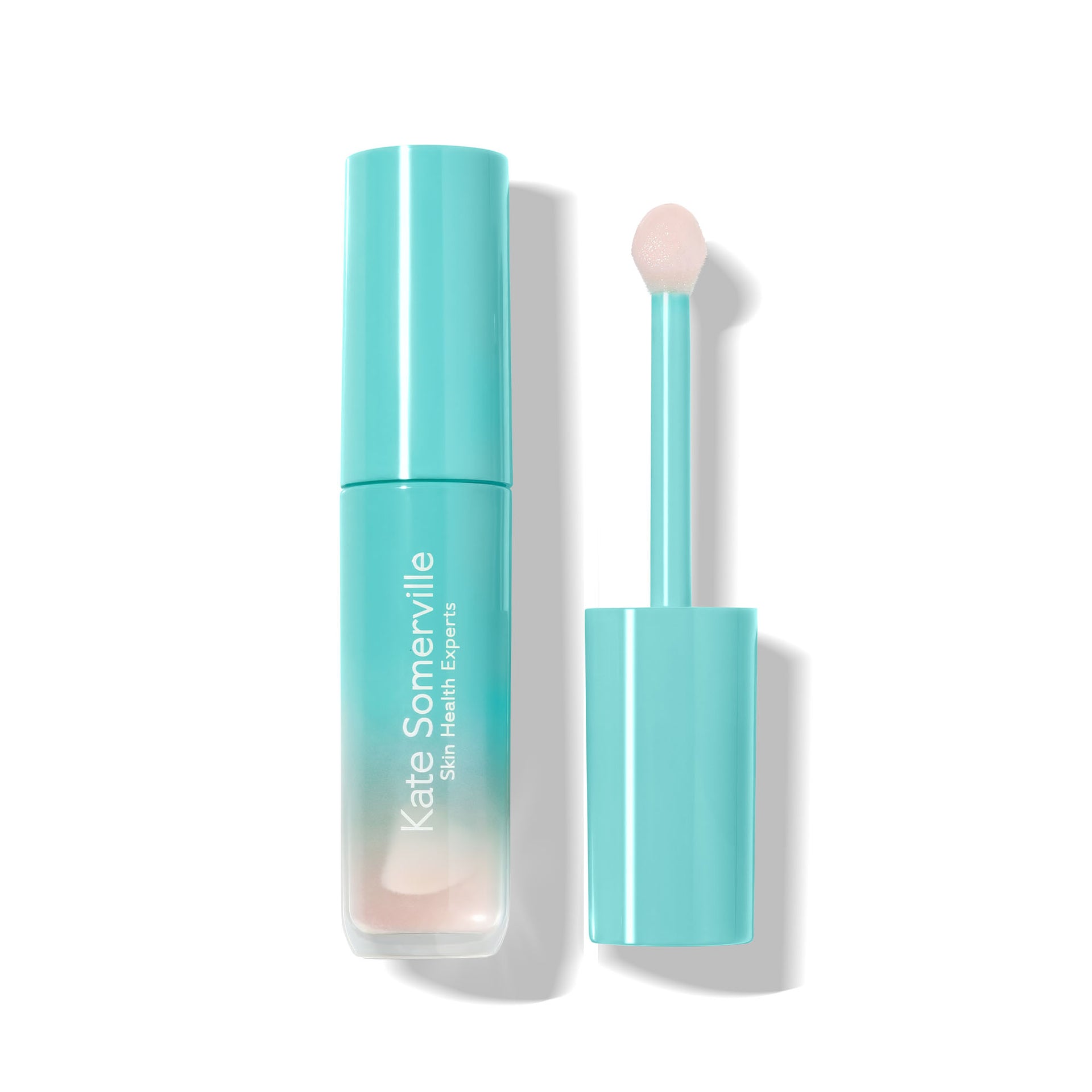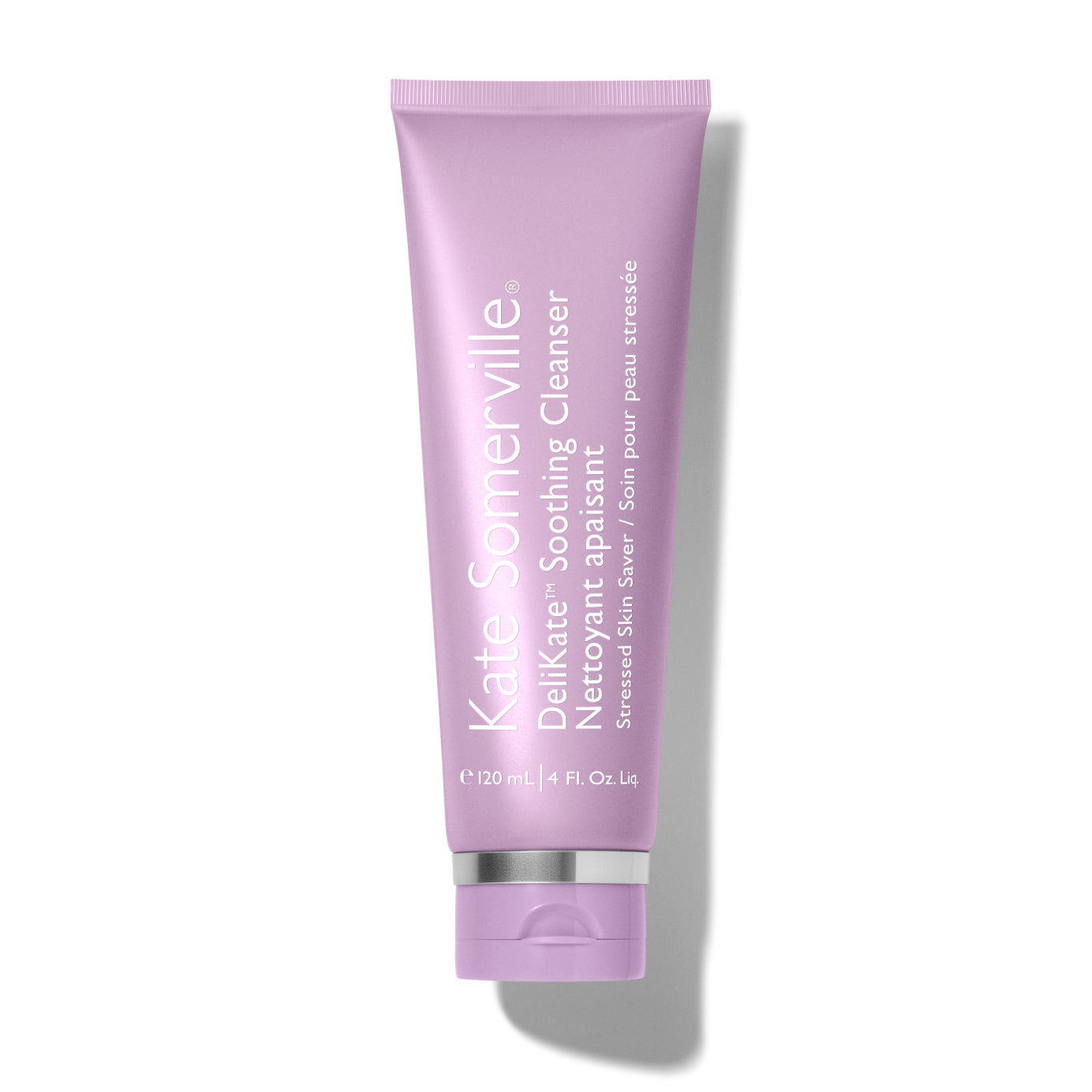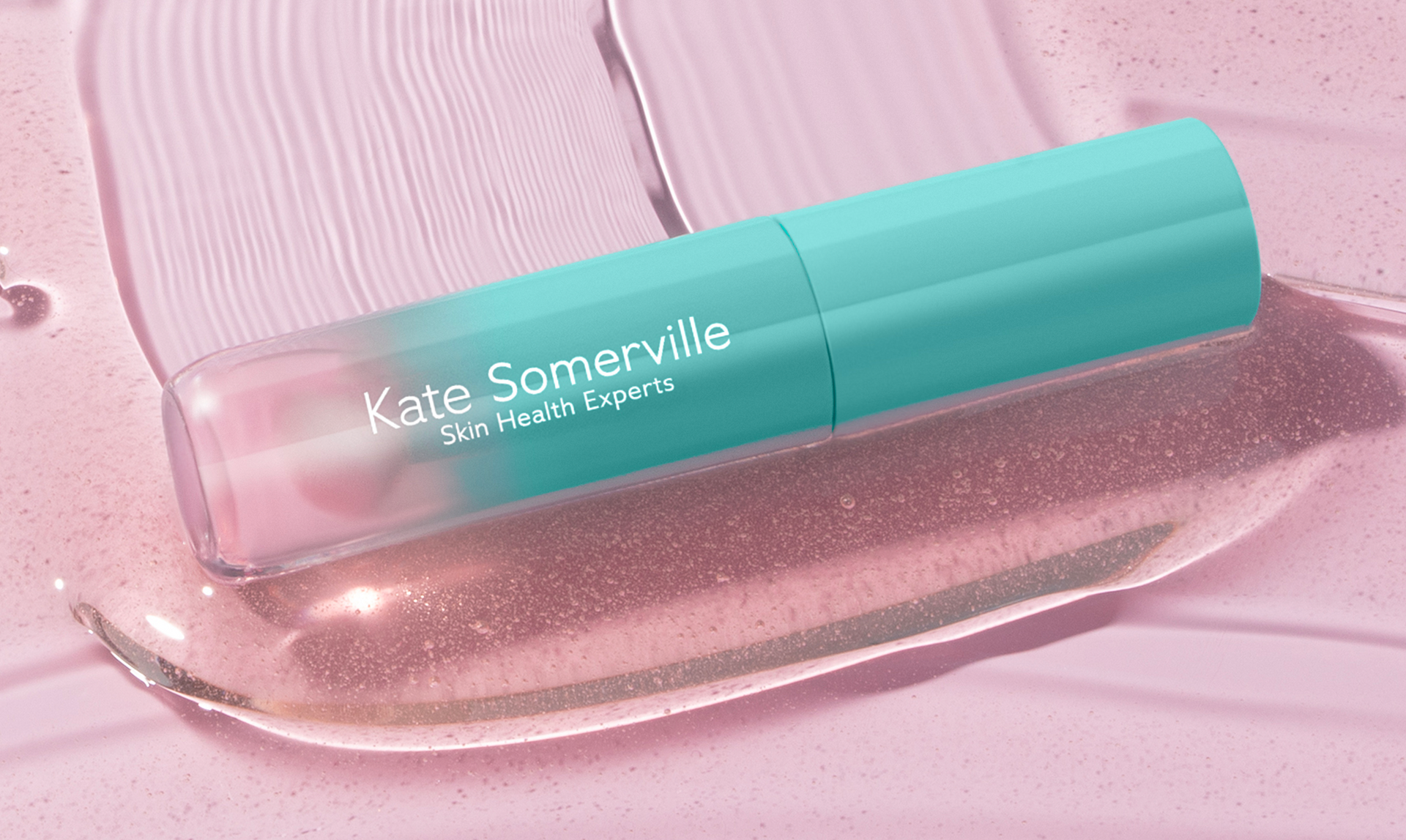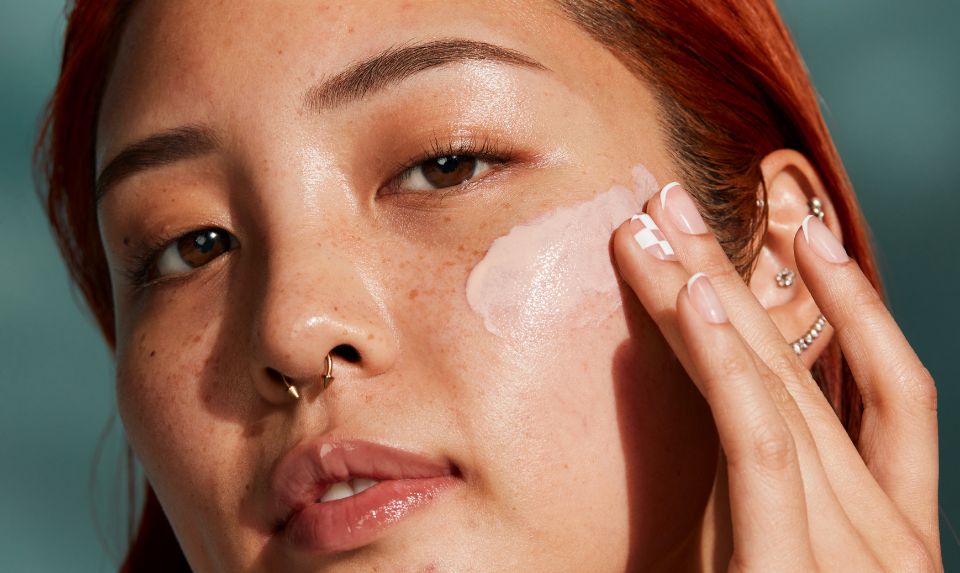So much of your skincare routine is based on the skin type you have. This knowledge helps you decide the types of products to use and the key ingredients to look for in order to best treat your unique skin [1]. But if you find yourself wondering what type of skin do I have? you are not alone. For some, it is easy to identify their skin type, but for others, it may not be as obvious. Fortunately, there is a way to find out for yourself, once and for all.
Skin Types
In reality, there are many skin types in the world. You can think of your skin type much like a fingerprint – it is unique to you. Everything from your hormonal levels and diet to the specific environmental pollutants [2] you are exposed to can have an impact on your skin and, therefore, the way you care for it. But for our purposes, we will focus on five major types.
Normal
This term generally refers to well-balanced skin with little to no imperfections or problems. People with this skin type generally would not describe their skin as persistently oily or dry, though if they experience either of those states it is easy for them to resolve and return their skin to its usual condition. If you have this skin type, you are likely to have small pores that are not enlarged or easily visible. Overall, normal skin types have radiant skin with few acne breakouts.
Oily
The most notable symptom of an oily skin type is a shiny face which is the result of excess oil on the surface of the skin. In addition, those with oily skin will often notice that they have enlarged pores and suffer from frequent breakouts of blackheads, pimples, and other blemishes. Unfortunately, an oily acne-prone skin type is often the result of puberty or other hormonal imbalances though it can sometimes be the consequence of excess stress or changes in the weather, like heat and humidity. These factors can also influence the amount of excess oil that presents itself on your skin. But the good news is, many of these factors are not permanent and can be addressed to help mitigate the effects on your skin.
Dry
Just as it sounds, dry skin types experience excessive and persistent dryness of their skin due to a lack of sebum (your natural facial oils) production. This can manifest as a dull, rough complexion with red patches, visible lines, and decreased elasticity leaving your skin feeling tight across your face. The opposite of an oily skin type, those with dry skin will likely have very small or nearly invisible pores. The skin can crack, peel, and become itchy or irritated. Dry skin can be attributed to a number of factors including your genes, changes in the weather, ultraviolet radiation from tanning beds, medications, indoor heating, excessively hot showers or baths, and even certain ingredients in soaps or cosmetics. Although those suffering from dry skin may not experience a significant amount of acne it can still occur, more often they will experience premature signs of aging such as wrinkles and fine lines.
Combination
Possibly one of the most common skin types, combination skin exhibits two or more skin types on the face – typically, dry and oily though other combinations are possible. Some markers of combination skin include slightly larger pores, shiny areas of the skin such as an oily T-zone (chin, nose, and forehead), and blackheads. Many mistake themselves as having an oily skin type when, in fact, there are portions of their skin which are dry or even normal. Combination skin presents a challenge when caring for it as you will need to find products that can help address multiple concerns.
Sensitive
Last but certainly not least, we have the sensitive skin type. Those with sensitive skin may experience bouts of oiliness or dryness, but experience significant redness and irritation on top of it as a reaction to a variety of external stressors. Kate Somerville’s skincare for sensitive skin is designed specifically to address these concerns and to gently nourish irritated skin. For example, sensitive skin types may react to certain cosmetic ingredients and environmental allergens or they may have a medical condition such as rosacea – the most common skin condition that affects 16 million Americans [3]. In fact, nearly half of the U.S. population [4] identify as suffering from sensitive skin. If you have sensitive skin, identifying and avoiding your triggers can help minimize reactions.
It bears mentioning that there is another type of skin, though it is not an official skin type, that needs special care: mature or aging skin. As we grow older, our skin loses elasticity and moisture resulting in more delicate skin with fine lines and wrinkles. As a result of these changes, you will need to adjust your skincare routine accordingly.
What is My Skin Type?
Hopefully, the descriptions of the various skin types above seemed familiar to you and maybe you already have an idea of your type at this point. But if not, there are a few different skin type tests or methods you can try to help you decide.
Bare-Faced Method
For this “test,” start by cleansing your face thoroughly using a mild cleanser then pat dry. As the name implies, leave your skin bare and do not add any more products to your face at this time. Wait for approximately 30 minutes before closely examining your cheeks, chin, nose, and forehead for any shininess or oil. Then wait another 30 minutes before evaluating your face again.
At this point, if your entire face is still oily and shiny, you likely have oily skin. If your face feels parched or tight, especially when you make facial expressions, you most likely suffer from dry skin. And if there is minimal shine on your nose, forehead, or other limited areas of your face, you probably have normal skin – though if the oily patches are more significant, combination skin is more probable. Although this method takes some time and careful evaluation, you will be able to clearly see how your skin behaves in its natural state.
Blotting Sheet Method
A much faster test of your skin type is to gently pat a blotting sheet on the different areas of your face, examining the sheet between each by holding it up to a light. Similar to the above, if the sheet is saturated with oil regardless of where it was blotted, you presumably have oily skin. Little to no presence of oil on the sheet could mean you have dry skin. While picking up some oil in certain areas may mean you have normal or combination skin.
Caring for Your Skin Type
Once you have identified your skin type, you are ready to begin building a custom skincare regimen [5] that will appropriately treat and care for your skin. As you start to develop a routine, consider the severity of your skin type as well. While two people may both have dry skin, they could have varying degrees of dryness. The same goes for oily skin.
Regardless of your skin type, your daily routine should consist of the same types of products and elements:
- Cleanser - You may choose to use an oil- or water-based facial cleanser, maybe even both if you subscribe to double cleansing, but whatever you choose, be sure it is formulated for your skin type. Those with combination skin should look for a mild cleanser while dry and sensitive skin should search for a product that is gentle and creamy. Oily complexions, on the other hand, may want to use a cleansing product that has ingredients, such as benzoyl peroxide, to help combat active breakouts.
- Exfoliator - There is a rumor that exfoliation is only needed for an active breakout, but it is actually an important step for maintaining healthy skin. Sensitive or dry skin types will want to use a very gentle exfoliant and avoid physical abrasives in their product and oily or normal complexions can stand to use more intensive exfoliators. The key is to monitor your skin’s reaction to the facial exfoliator and adjust the frequency with which you use the product accordingly.
- Toner - These products are designed to balance your skin's pH, remove any lingering dirt on the surface of your skin, and help to replenish any hydration lost during cleansing. All of this prepares your skin for any products which follow it. There are a number of clarifying toners available which help to gently restore your skin tone to a balanced state and are great for sensitive and dry skin types – look for products that use words like hydrating, balancing, or calming. Those with oily skin may be tempted to use intense and strong toners to strip the oil from their skin, but this could actually hurt more than it helps as your skin may start to produce even more oil to compensate. Instead look for products labeled as clarifying or equalizing.
- Moisturizer - An obvious step for dry and sensitive skin types, but moisturizing is crucial for every type of skin as it helps to maintain your skin’s natural barrier against environmental stressors. Oily skin types will want to look for lightweight, oil-free, or non-comedogenic products so as not to further clog their pores. All other skin types can look for moisturizers that are medium-weight and may include other ingredients to address secondary skin concerns. For example, an anti-aging moisturizer.
While these four steps are the must-haves of a complete skincare routine, you can add other products in to build out your regimen and confront other concerns or goals. Essences, serums, eye creams, and sleep masks can all work wonders for your skin when implemented into a routine. It is important to note that your skin type is not permanent either. So you will want to monitor your skin’s progress as your type could change if other elements in your life change such as diet, pregnancy, or even a move. Remember, you can always reassess your type of skin and adjust your regimen as needed.
Sources:
- https://www.ncbi.nlm.nih.gov/pmc/articles/PMC3266803/
- https://link.springer.com/article/10.1023/A:1019540316060
- https://www.aad.org/media/stats/conditions/skin-conditions-by-the-numbers
- https://www.ncbi.nlm.nih.gov/pubmed/21781068
- https://www.aad.org/File%20Library/Main%20navigation/Public%20and%20patients/Kids'%20zone/Good%20Skin%20Knowledge/11-13/Skin_Types_11_13.pdf




















